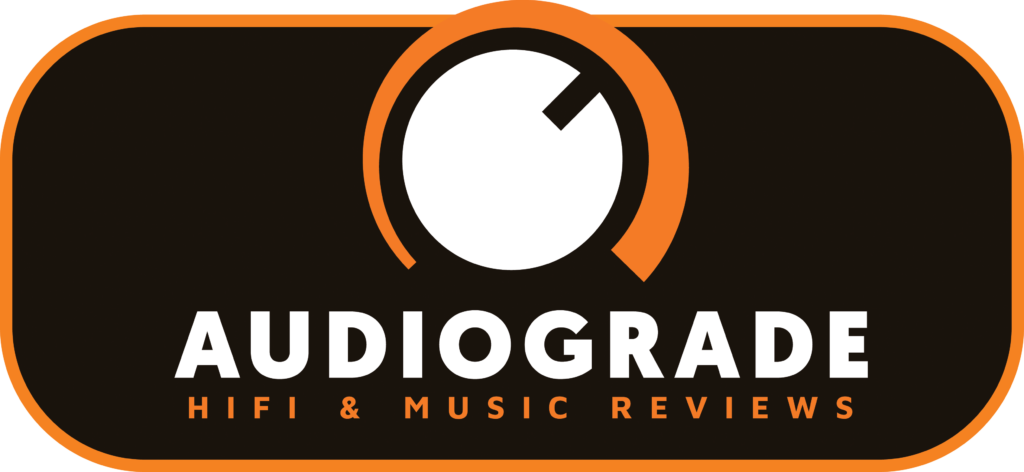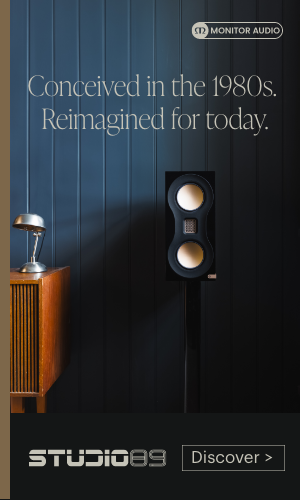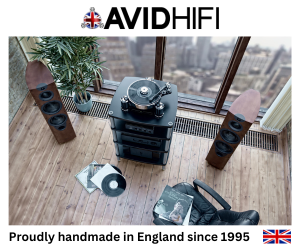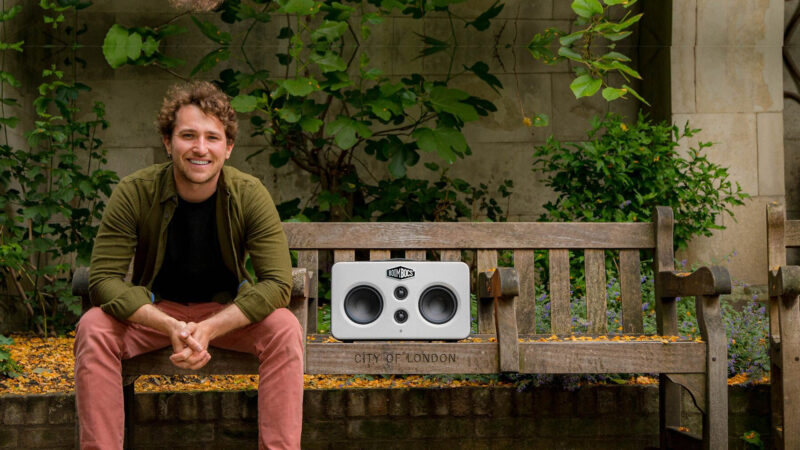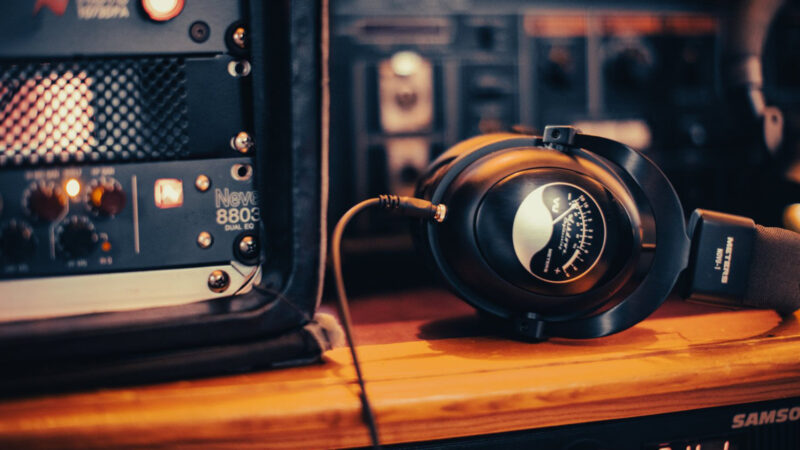Who says hifi can’t be fun, serious and affordable in equal measure? Not BoomBocs and its company founder Jonny Williams.
Although relatively new to the hifi game, Jonny’s day job is as an acclaimed sound engineer to the stars, which keeps him busy touring with a musical roll call that reads like a who’s who of pop and rock, having worked with everyone from Lady Gaga (who bought a dozen of his players for her friends and family) to Kylie Minogue, Rita Ora, Queen, Anastacia and the list goes on. Back in Brixton he keeps himself busy designing portable players that disrupt the notion of what a bluetooth speaker should do. Funky colours? Check. Retro styling? You got it. Serious sound engineering pedigree? All part of the package.
First came the MKI and V2.0 models, with custom designs for his famous clientele including the Late Tom Petty before Jonny, keen to get the price and package size down, launched the Studio model that’s under scrutiny here. At its heart sits a 10W Class D amp driving a stereo pair of 70mm aluminium drivers. Essential to the Studio’s DNA is Jonny’s own signature sound fine tuning that’s applied to its digital signal processing (DSP) for better clarity, punch and seamless integration at all listening levels.
Find out more about the story behind BoomBocs in Jonny’s blog for Audiograde.

Striking looks and solid build ensure the BoomBocs stands out from the crowd. Our review model came in Dahlia Orange, with Pink Charlotte, Green Quartz, Brilliant White and Bold Black also on offer
Make a statement
Fresh from it’s simple packaging, the BoomBocs immediately defies its £129 price tag by some margin, feeling solid while looking as cool as custard. In fact this speaker has garnered more interest from friends and fellow reviewers passing through my listening room than kit costing a hundred times as much. Big brands take note indeed.
Setup via its 55mm LCD screen is plain sailing, thanks to the setup wizard that greets you, with a series of menus and sub menus which are instantly intuitive, if a bit reminiscent of my old Nokia. Options include an alarm function and sleep timer plus access to internet radio with up to 20 saved preset stations. Streaming services from Spotify, Amazon Music and Deezer are inbuilt and you can also select from low/normal/high quality modes when streaming. Of course only having these within the unit doesn’t mean you’re just limited to them, as you can stream other services from your smartphone or computer via Bluetooth or physically, using its 3.5mm aux input.
The sound options continue, with equaliser settings for normal, flat, jazz, rock, classic, pop and news modes plus a My EQ option, allowing you to tailor treble and bass manually, alongside an old school loudness boost, continuing the retro vibe.
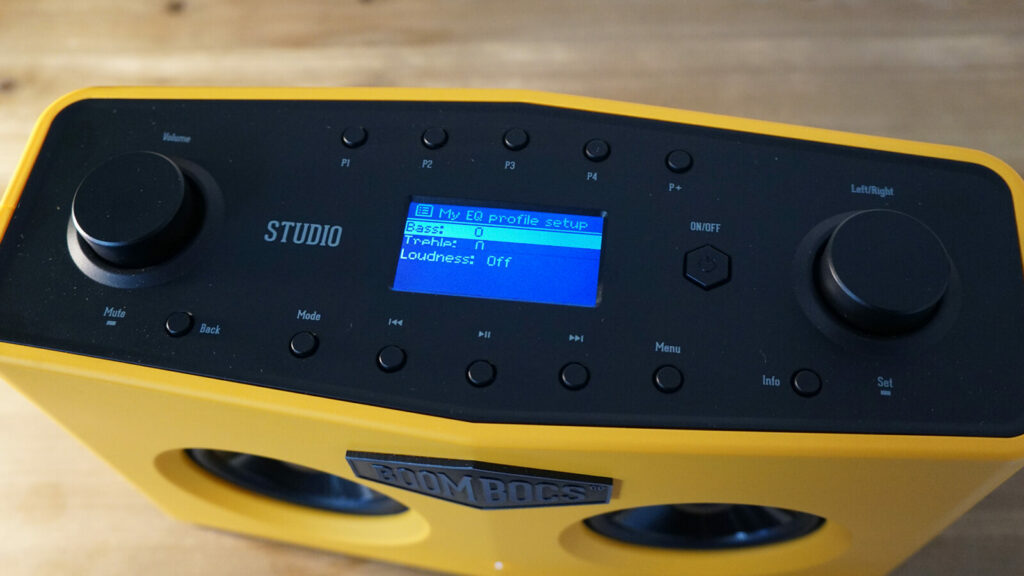
Controls are almost instantly intuitive, with a variety of EQ sound settings, including to manually adjust bass, treble and a loudness boost
Operating the BoomBocs via the top panel controls is easy, but if you’re gagging for some app action, you can do so by downloading UNDOK (with a new app in the works), which also lets you rename the unit alongside accessing the rest of the Studio’s full menu.
Performance
Dialling up AC/DC’s Hells Bells via a Tidal Master file over Bluetooth via my iPhone 13 and exploring the EQ options reveals the rock setting plus loudness on does what it says on the tin. Compared to the other modes, this one gives the music more edge and bite. From two metres away the BoomBocs has enough drive and presence to sound bigger than its compact carcass suggests. There’s also an impressive sense of energy and urgency to the music, that makes you sit up and take notice.
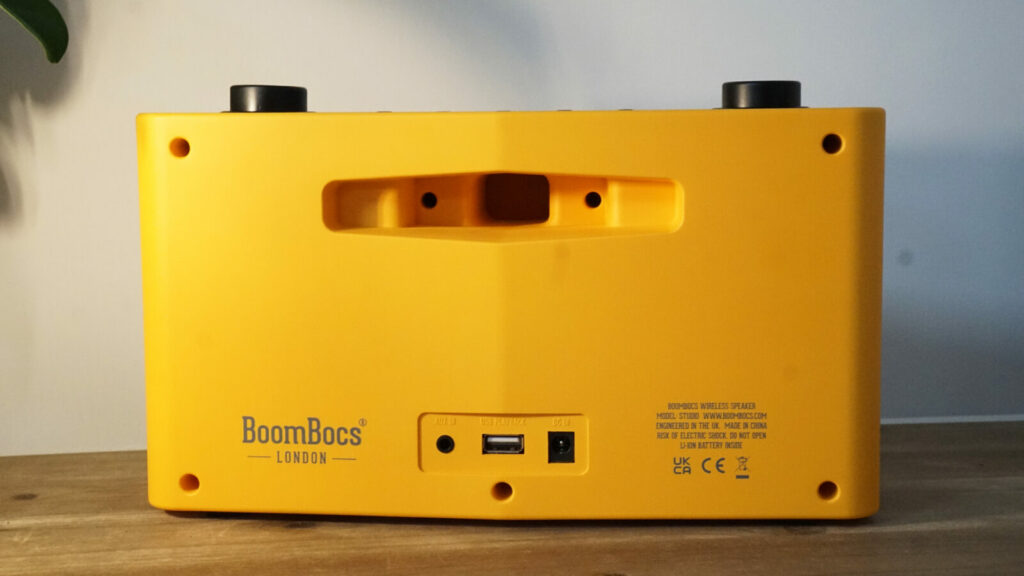
Rear panel includes discreet grab handle, power input for the supplied wall wart charger plus USB-A and 3.5mm aux
Guitar solos for example are well defined and escape the BoomBocs’ cabinet with ease, more so than I was expecting from a unit of this size. And when the track builds up to its mighty climax, the punch that Jonny has engineered into the audio becomes apparent, as the percussion packs an impressive wallop.
Slowing down the pace via Counting Crows’ Colorblind streamed via Deezer has the BoomBocs plucking at my heart strings. Sure imaging and realism of the instruments are some way off my separates system, but given the BoomBocs costs less than your average balanced interconnect cable, this hammers home the point of what it is able to deliver at the price. The timing of the piano’s changing tempo is paced just right, as its notes hang in the air with a nice sense of natural decay, being a perfect foundation for Adam Duritz’s vocals which have admirable scale and depth that makes the music sound honest and full of feeling.

The UNDOK app lets you access BoomBocs’ full suite of settings, including renaming the device
Switching to BBC Radio 3’s Tune In programme and a performance of Brahms’ Violin Concerto in D major Op. 77 (3rd movement) by Thomas Zehetmair and the Royal Northern Sinfonia reveals the Studio not to just be rock or bust. Strings across the acoustic spectrum are nicely separated with a sense of air and space around them, while the gathering climax is rendered without the Studio sounding congested or overwhelmed, even at full output, revealing it to be a balanced desktop performer.
Changing the tempo again, this time to Feel Good by Maribou State (featuring Khruangbin) from Jonny Williams exclusive playlist for Audiograde, is a perfect metaphor for what the BoomBocs brings to the party. The Studio’s pop sensibilities simply excel with this track, sounding so full of rhythm and dynamism that even the most demanding listener would be hard pressed not to walk away with a small on their face and a beat in their stride, because put simply, what the BoomBocs does with the music is simply make you feel good.
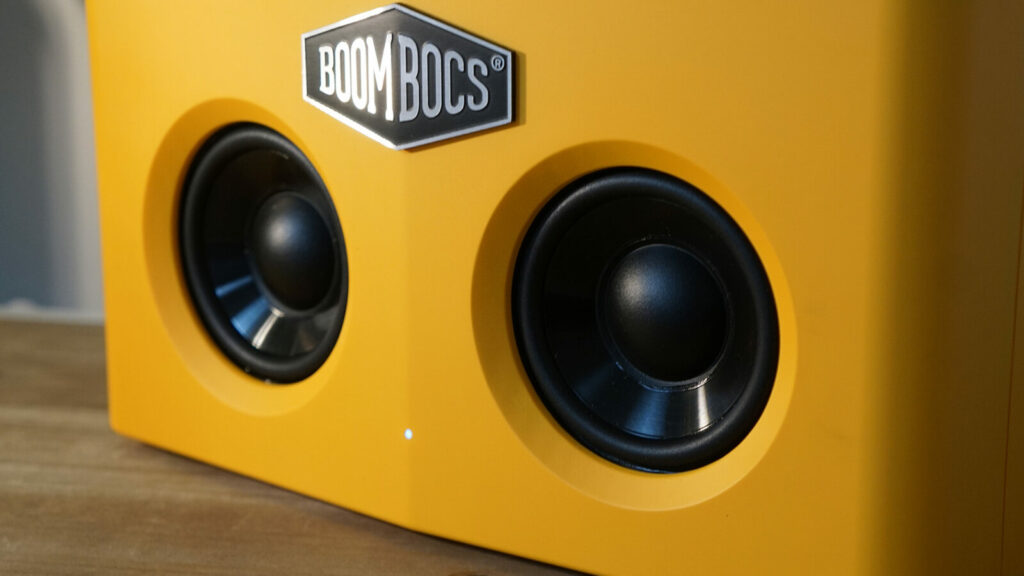
Twin 70mm drivers are formed from aluminium for toughness which will be welcome, given the lack of protective covers. recessed chamfers ensure wide and even sound distribution
In summary
The BoomBocs studio is a shot in the arm for the bluetooth speaker market. It looks cool, is well made and sounds great even at twice the price. It also adds more than a splash of fun and excitement to any room it graces, making it the ideal audio stocking filler.

